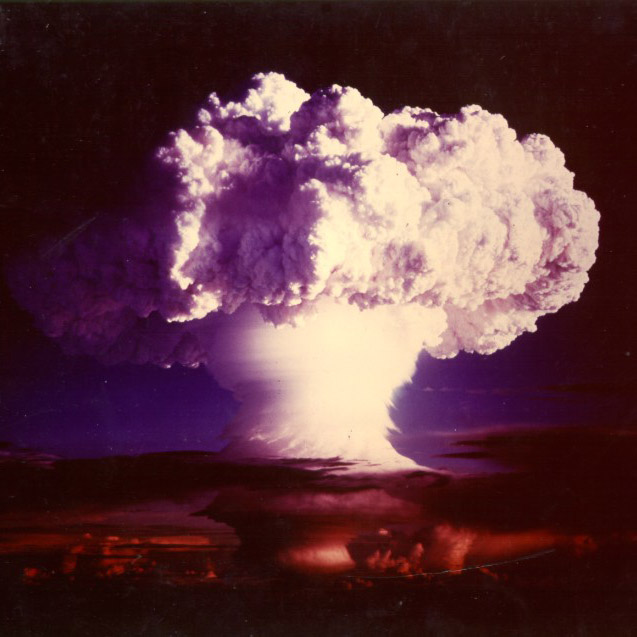Einsteinium
99
Es
Golongan
n/a
Periode
7
Blok
f
Proton
Elektron
Neutron
99
99
153
Sifat Umum
Nomor atom
99
Massa atom
[252]
Nomor massa
252
Kategori
Aktinida
Warna
n/a
Radioaktif
Ya
Dinamai dari Albert Einstein
Struktur kristal
n/a
Sejarah
Einsteinium was discovered as a component of the debris of the first hydrogen bomb explosion in 1952.
It was identified by Albert Ghiorso and co-workers at the University of California, Berkeley in collaboration with the Argonne and Los Alamos National Laboratories, in the fallout from the Ivy Mike nuclear test.
The new element was produced by the nuclear explosion in miniscule amounts by the addition of 15 neutrons to uranium-238.
It was identified by Albert Ghiorso and co-workers at the University of California, Berkeley in collaboration with the Argonne and Los Alamos National Laboratories, in the fallout from the Ivy Mike nuclear test.
The new element was produced by the nuclear explosion in miniscule amounts by the addition of 15 neutrons to uranium-238.
Elektron per kulit
2, 8, 18, 32, 29, 8, 2
Konfigurasi elektron
[Rn] 5f11 7s2
Einsteinium is the first divalent metal in the actinide series
Sifat Fisika
Fase
Solid
Kepadatan
8,84 g/cm3
Titik lebur
1133,15 K | 860 °C | 1580 °F
Titik didih
-
Kalor peleburan
n/a kJ/mol
Kalor penguapan
n/a kJ/mol
Kapasitas kalor molar
- J/g·K
Kelimpahan di kerak bumi
n/a
Kelimpahan di alam semesta
n/a

Kredit Gambar: Wikimedia Commons (National Nuclear Security Administration)
Einsteinium pertama kali diamati dalam debu fallout dari uji nuklir Ivy Mike
Nomor CAS
7429-92-7
Nomor PubChem CID
n/a
Sifat Atom
Jari-jari atom
-
Jari-jari kovalen
-
Elektronegativitas
1,3 (Skala Pauling)
Potensi Ionisasi
6,42 eV
Volume atom
28,5 cm3/mol
Kondusivitas termal
0,1 W/cm·K
Bilangan oksidasi
2, 3
Aplikasi
Einsteinium is mainly used for scientific research purposes.
The rare isotope einsteinium-254 is favored for production of ultraheavy elements.
Einsteinium-254 was used as the calibration marker in the chemical analysis spectrometer of the Surveyor 5 lunar probe.
The rare isotope einsteinium-254 is favored for production of ultraheavy elements.
Einsteinium-254 was used as the calibration marker in the chemical analysis spectrometer of the Surveyor 5 lunar probe.
Einsteinium is harmful due to its radioactivity
Isotop
Isotop stabil
-Isotop tidak stabil
240Es, 241Es, 242Es, 243Es, 244Es, 245Es, 246Es, 247Es, 248Es, 249Es, 250Es, 251Es, 252Es, 253Es, 254Es, 255Es, 256Es, 257Es, 258Es